|
|
Fighting knives used by British commandos and SOE during WW2 |
|
|
|
Indian Commando Knives |
|
Text and pictures by
Olof Janson unless otherwise stated. |
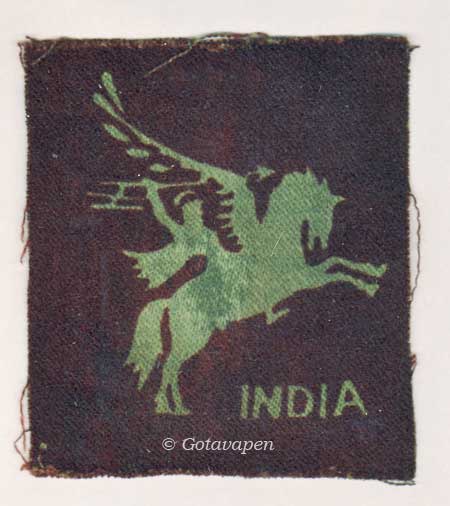 |
Special
honour should be given to:
-
Robert Wilkinson-Latham,
-
Ron Flook,
- Roy Shadbolt.
Who
have given me much assistance.
The rare India Pegasus
Patch |
updated
2013-02-14
Fighting Knives used in the Far East.
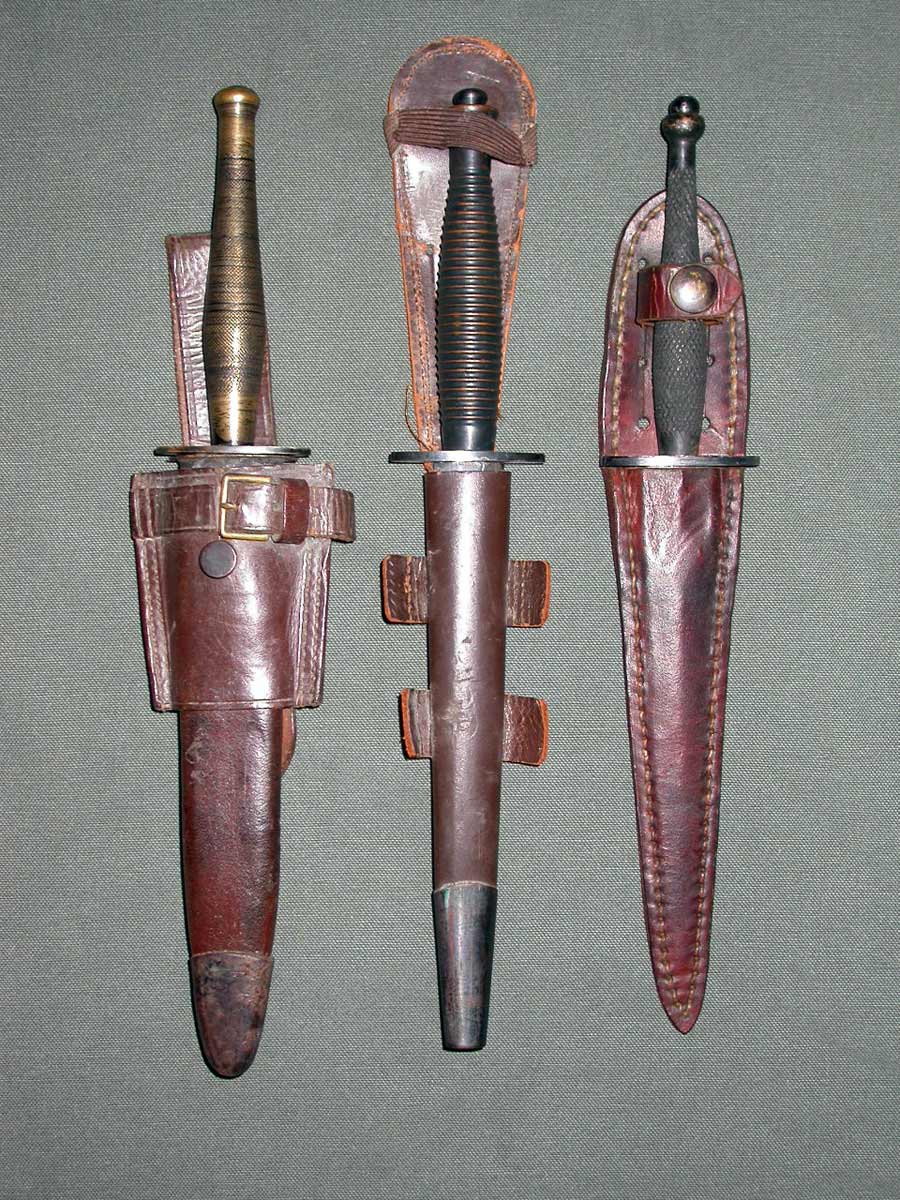 |
 |
|
Classic Indian
made F-S knife |
Standard Third
Pattern |
Local made
Second Pattern |
Classic Indian
made F-S knife
|
The first knife is the
classic (Indian made) F-S knife, complete with its original scabbard and frog.
There are no reports of any examples of this pattern having ordinance markings
of any kind. This example is no different, possibly suggesting that these knives
did not go through the Ishapore Arsenal, perhaps going straight to airborne or
commando units.
The knife has an interesting brass variant grip
with numerous rows of knurling. |
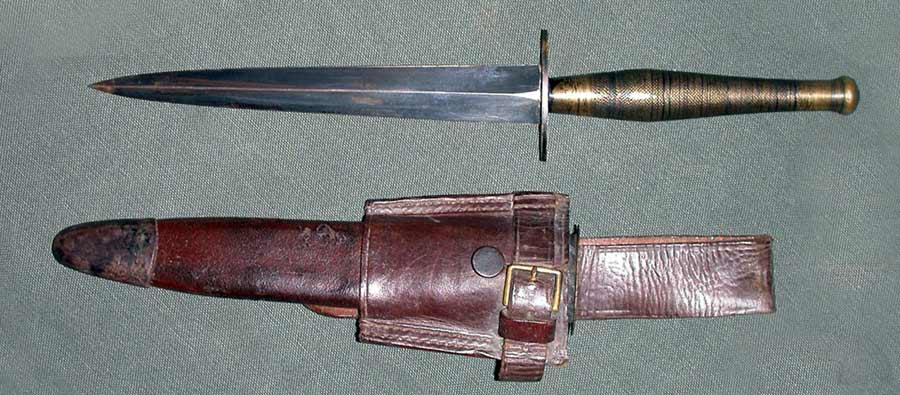 |
|
Classic Indian
made F-S knife |
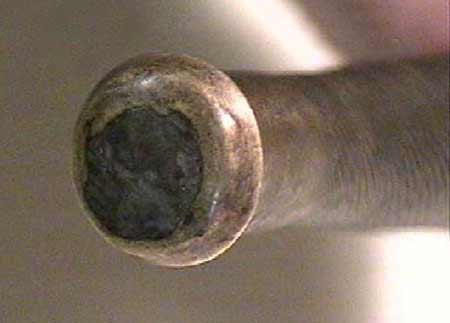 |
On the India examples molten metal was poured into
the grip via the pommel.
|
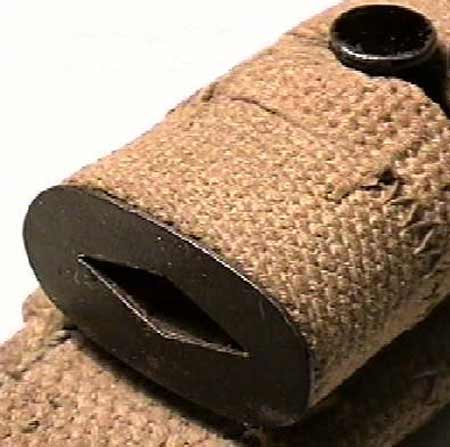 |
Scabbard throats
were fitted properly to match with the blades as can be seen here on a different
scabbard belonging to a similar knife. |
[Top
of the page]
Third Pattern British Commando
knife.
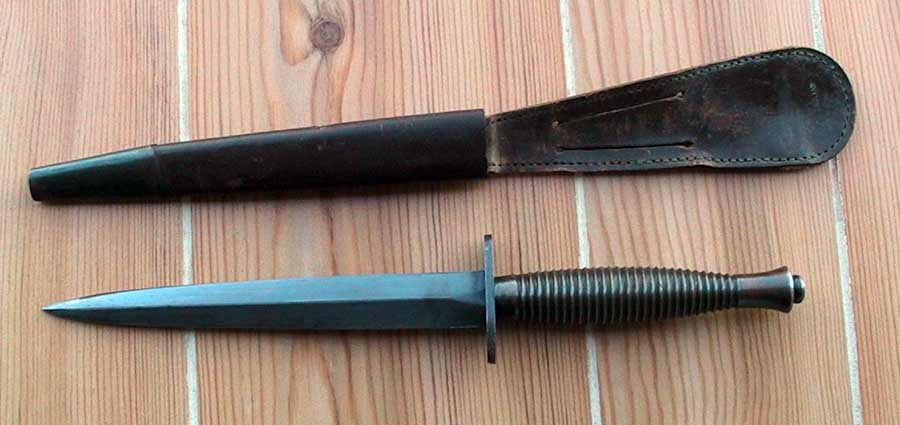 |
|
Third Pattern British Commando knife most likely from Wilkinson
Sword Co |
|
The Second knife is the standard Third Pattern
F-S
British Commando type,
marked with the Ishapore inspection mark of " I"
I"
|
 |
I have noted that all
 I stamped third patterns have
the ‘V’ grind of the hand ground blades, that are higher quality and less common
than the machine ground blades one encounters, with few exceptions I feel that
most of these are of Wilkinson manufacture as all the examples I have
encountered are identical to Wilkinson marked knives.
I stamped third patterns have
the ‘V’ grind of the hand ground blades, that are higher quality and less common
than the machine ground blades one encounters, with few exceptions I feel that
most of these are of Wilkinson manufacture as all the examples I have
encountered are identical to Wilkinson marked knives.
This example is over-stamped
with ‘ENGLAND’ indicating it was sold as surplus to the US following WWII.
|
[Top
of the page]
Local made
Fairbairn Sykes model - Second Pattern
 |
 |
|
Local made
Second Pattern |
|
This example is of the Second
Pattern type but obviously made in India. I believe it is very rare.
I have
encountered a few of these and all have variation in their manufacture, I feel
it is likely that they were made by local artisans to fill the shortfall in
knives arriving from England. This particular knife and scabbard are very well
made, having a hand ground blade (as one would expect being ‘hand made’) and is
a good copy of the traditional Second pattern, all be it differing in detail.
The scabbard is
more traditional like a hunting knife scabbard.
Molten metal was poured into
the grip via the pommel. Traces of the metal can be seen forming a seal around
the grip against the guard. |
 |
It carries the
" I"
stamp (but NO ENGLAND stamp).
I"
stamp (but NO ENGLAND stamp).
The
Broad Arrow and I stamp is NOT Ishapor but the acceptance mark of the India
Stores Department, who prewar marked the good Arrow and ISD.
During the war any stores for India were marked I
|
[Top
of the page]
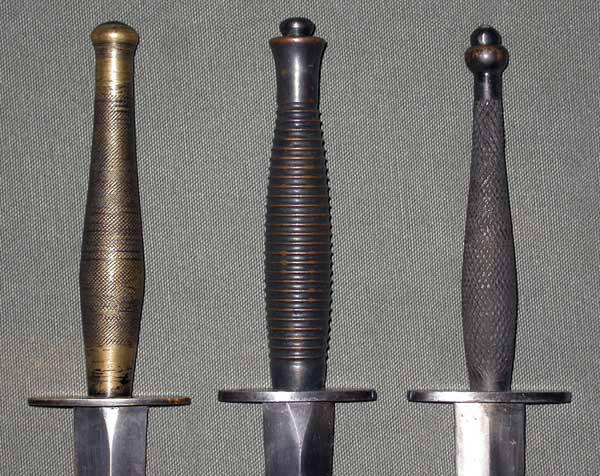 |
Left to right:
Classic
Indian made F-S knife
Standard Third
Pattern
Local made,
Second Pattern |
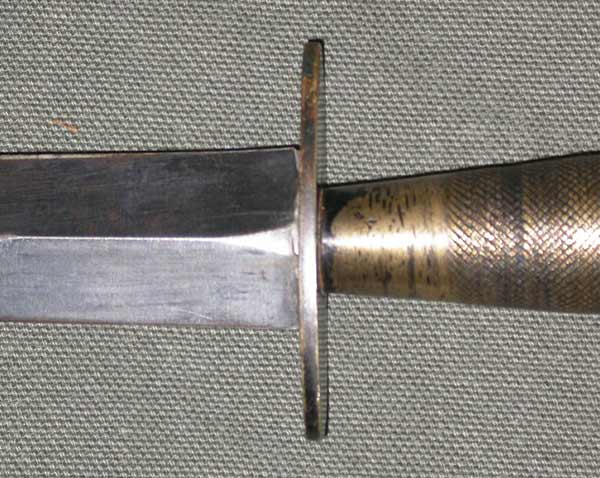 |
Classic
Indian made F-S knife |
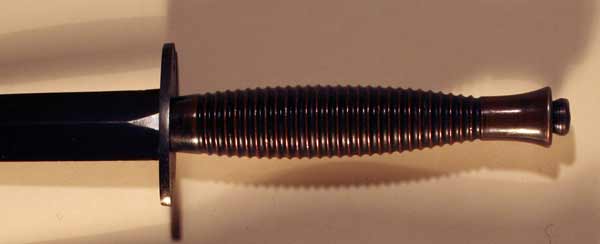 |
Standard Third
Pattern |
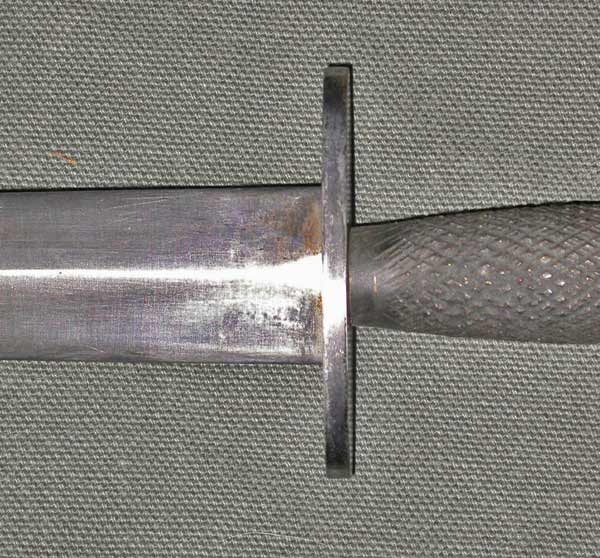 |
Local made,
Second Pattern |
[Top
of the page]
|
The famous Kukri
|
|
To the right Gorkhas Brigade badge.
Below. Top to bottom WWII Kukri;
-
Mk2 Kukri (first issued in WWI), full tang
-
8th GR kukri, stick tang
-
IA issue kukri, stick tang
-
IA issue kukri, stick tang
-
IA issue kukri (style carried over from WWI), stick tang
-
Mk3 kukri, full tang
|
 |
|
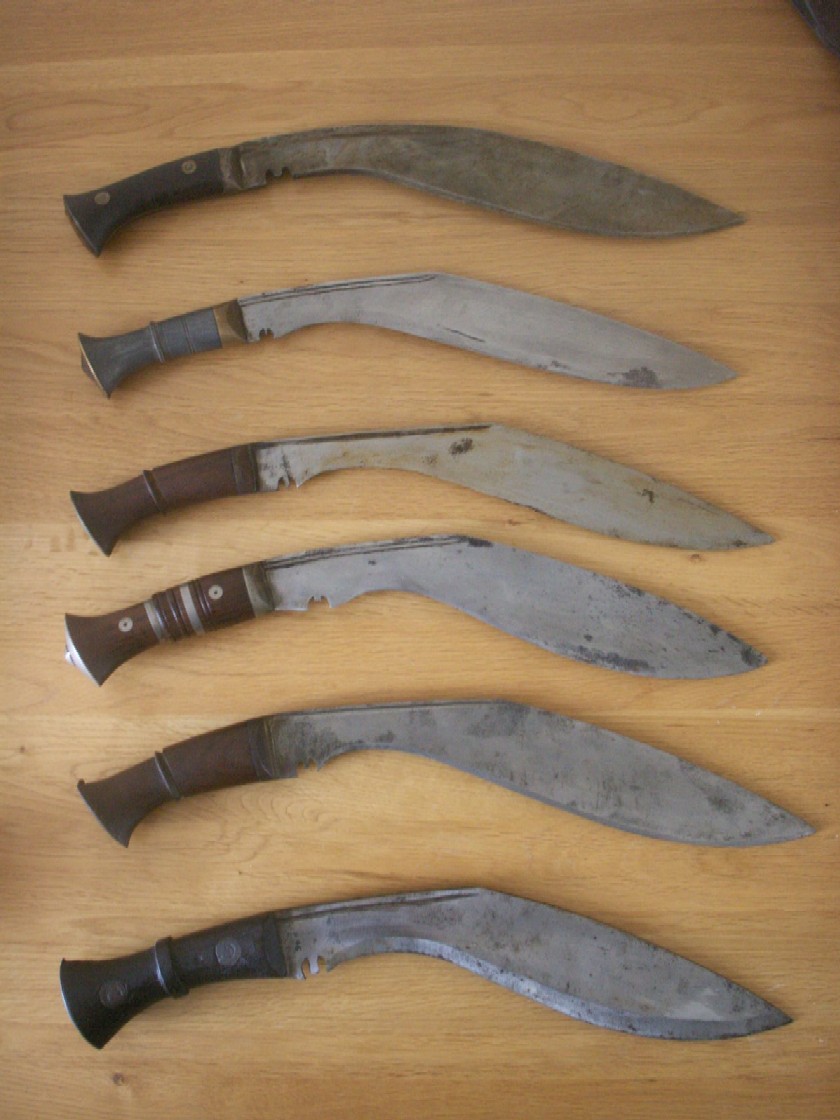 |
|
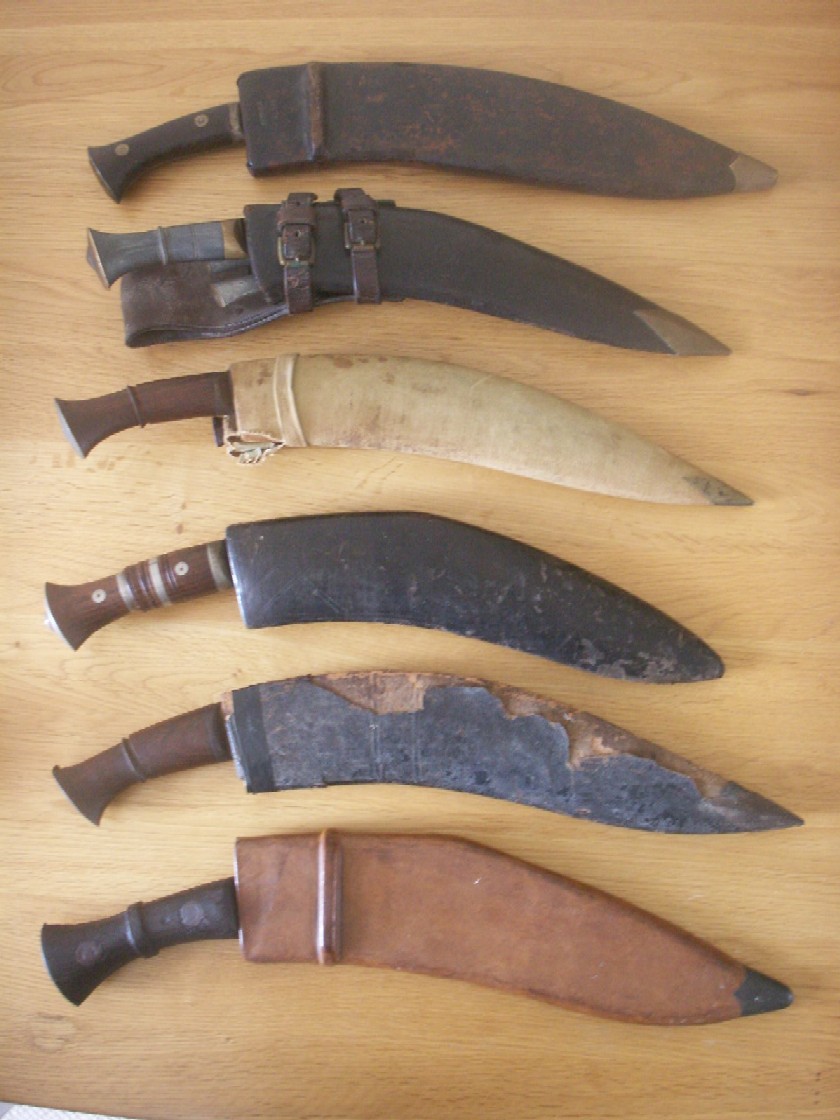 |
|
Courtesy of Sirupate |
[Top
of the page]
|
Indian Paratrooper knife |
|
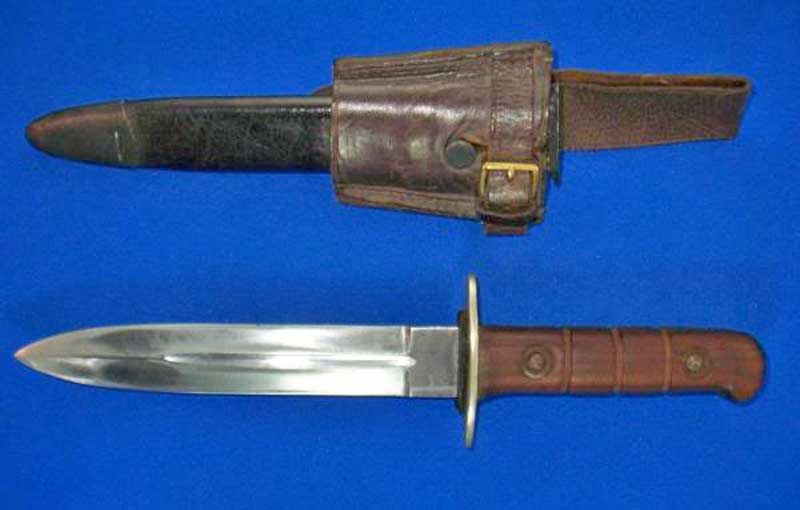
|
|
Courtesy of Dutchy357. |
[Top
of the page]
|
Chindit knives |
|
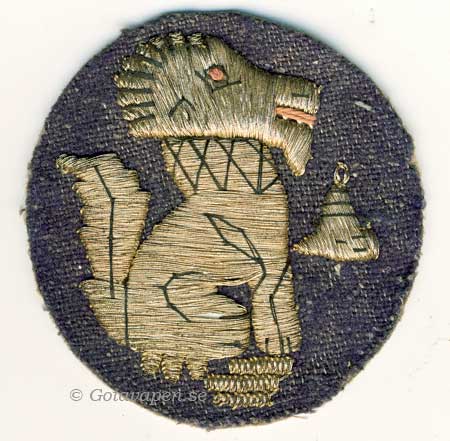 |
The Chindits were the largest of the allied Special Forces of World War II.
It was a Commando unit which infiltrated behind the Japanese lines in Burma.
The name Chindits was given to them by their leader, Major-General Orde C.
Wingate, D.S.O.
To the lefte is an original bullion Chindit badge from
WW2. |
|
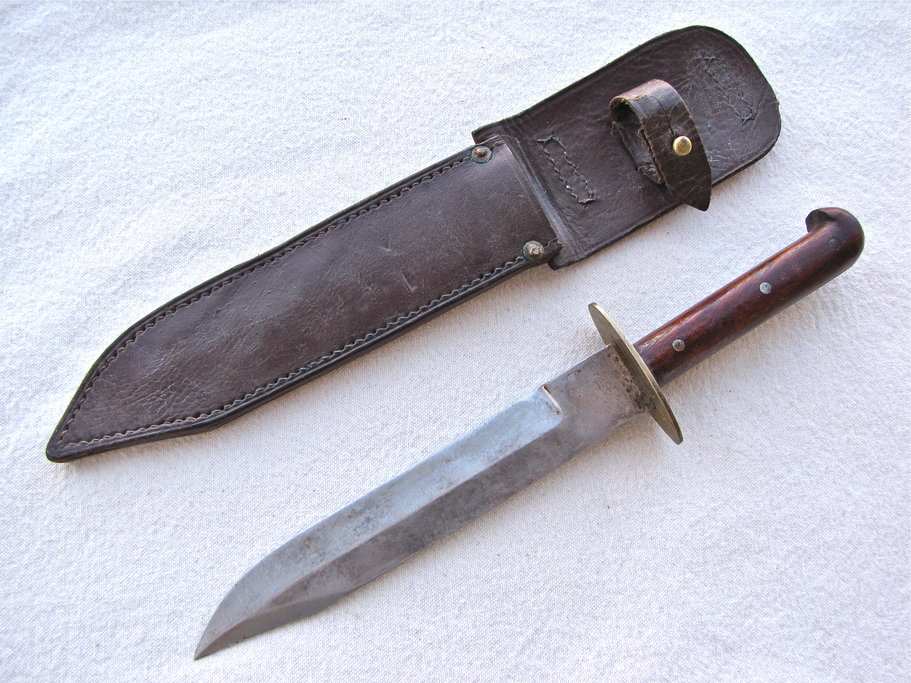
This is a Chindit Bowie knife.
Courtesy of Roy Shadbolt |
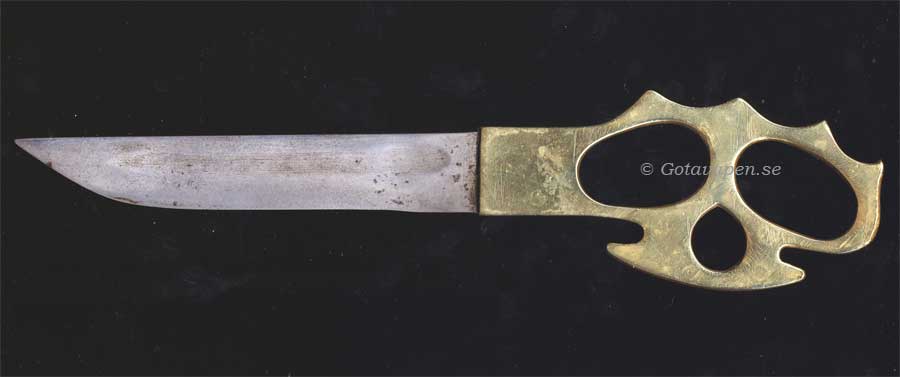 |
|
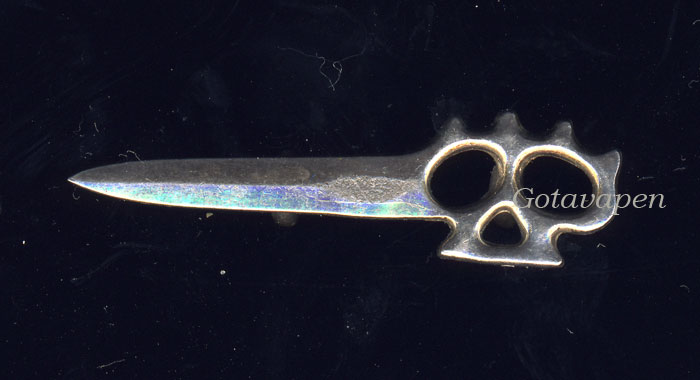 |
Men from Middle East Commando went to this force and
brought their knives. This is such a knife made in India. They also made the
same type of Hat badges. This one made of Sterling Silver.
Private collection |
[Top
of the page]
[Top
of the page]
References:
|
Robert Wilkinson Latham |
His own web
site |
|
Alan W. Locken |
Commando 1940 - 1945 |
|
Robert A. Burlein |
Allied Military Fightingknives |
|
Ron Flook
|
British and Commonwealth military knives. |
|
Fredrick J. Stephens |
Fighting Knives |
|
Frank Trzaska |
The O.S.S. Stiletto - Knife World February 1998. |
|
Frank Trzaska |
The Raider Stiletto - Knife World July 1997 |
|
Kelly Yeaton |
The First Commando Knives. |
|
John Nowhill & son |
Sheffield |
|
Michigan
knives |
|
|
Dr. William Windrum |
The earliest commando knivesAllan W. Locken – Commando
1940 - 1945. |

|